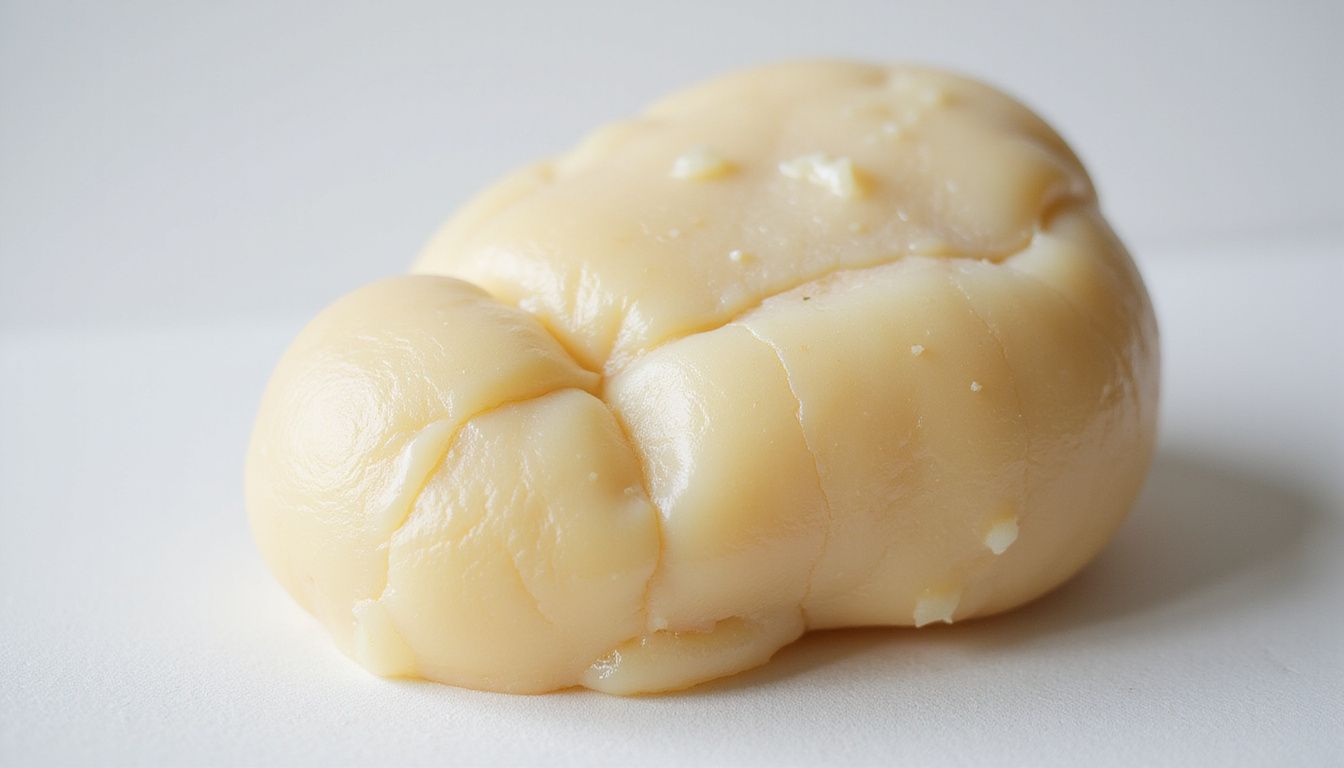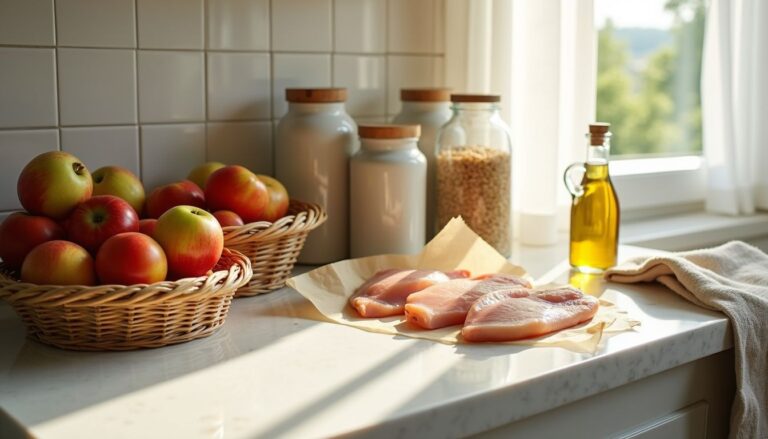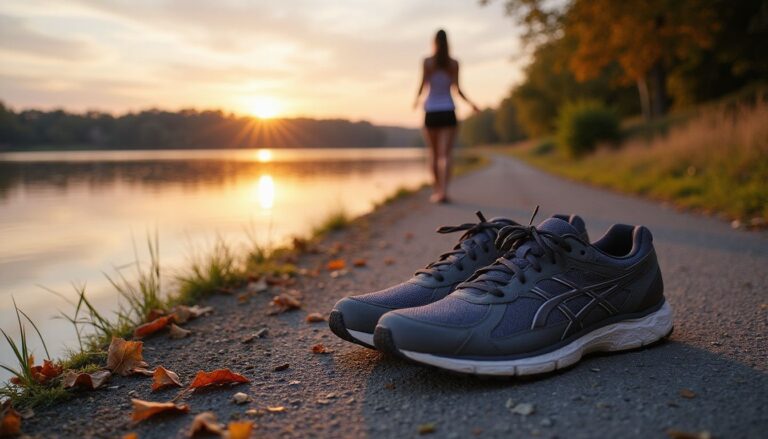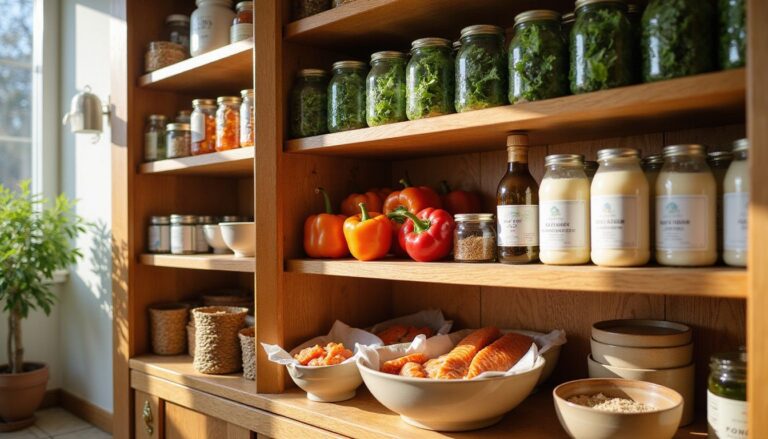Shed 5 Pounds Of Fat With A Human Fatty Tissue Demonstration Model
Our Nutrition Assistant AI Suite will transform your body. You will lose fat, get toned, and build muscle. Gain confidence and optimal health.
Many people work hard to lose 5 pounds of fat, yet it is hard to picture what that amount really looks like. A human fatty tissue demonstration model gives a clear, hands-on view of volume and weight. Seeing five pounds in front of you can boost weight loss motivation and make your goal feel possible.
This guide explains how a lifelike fat replica supports learning, how a calorie deficit leads to fat loss, and which simple habits move the needle. You will also learn safe, science-backed steps to reach your target.
Visual proof of progress can make your journey feel easier and more focused.
Key Takeaways
- A human fatty tissue demonstration model, such as the Medarchitect 5 lb replica (UPC: 608408910442), shows the true size and feel of five pounds of body fat.
- Losing five pounds of fat requires about a 17,500 calorie deficit in total. Aim for a daily deficit of 500 to 1,000 calories for steady, safe progress.
- Visual tools like fat replicas can strengthen commitment, since concrete feedback supports goal setting and follow-through. Findings from public health agencies and peer-reviewed studies support this approach.
- Balanced routines that combine HIIT, strength training, hydration of about 2.5 to 3 liters per day, and whole foods help maintain fat loss without sacrificing muscle.
- Clinical research links modest weight loss with lower inflammation, improved risk markers, better energy, and higher confidence.
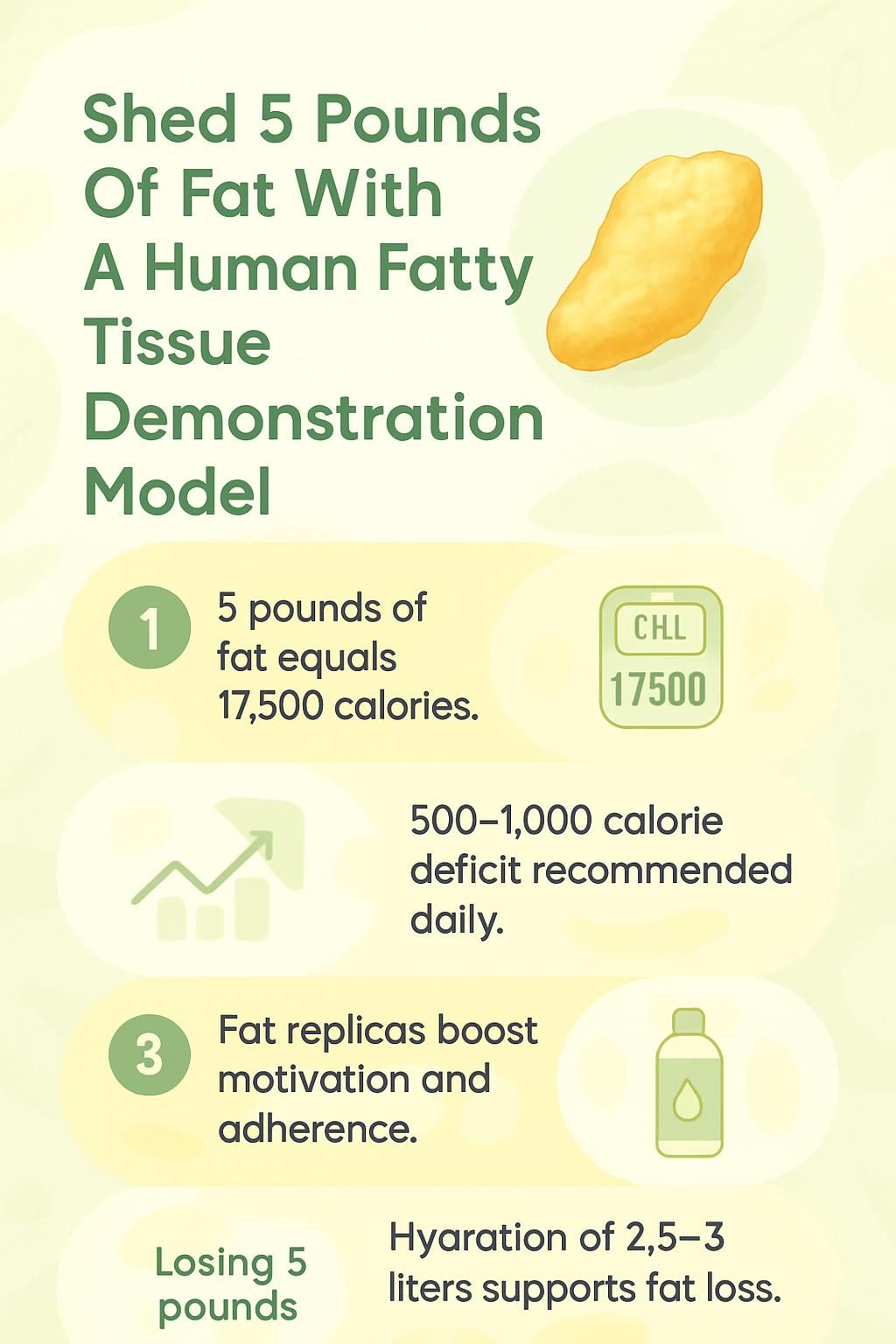
Understanding the Human Fatty Tissue Demonstration Model
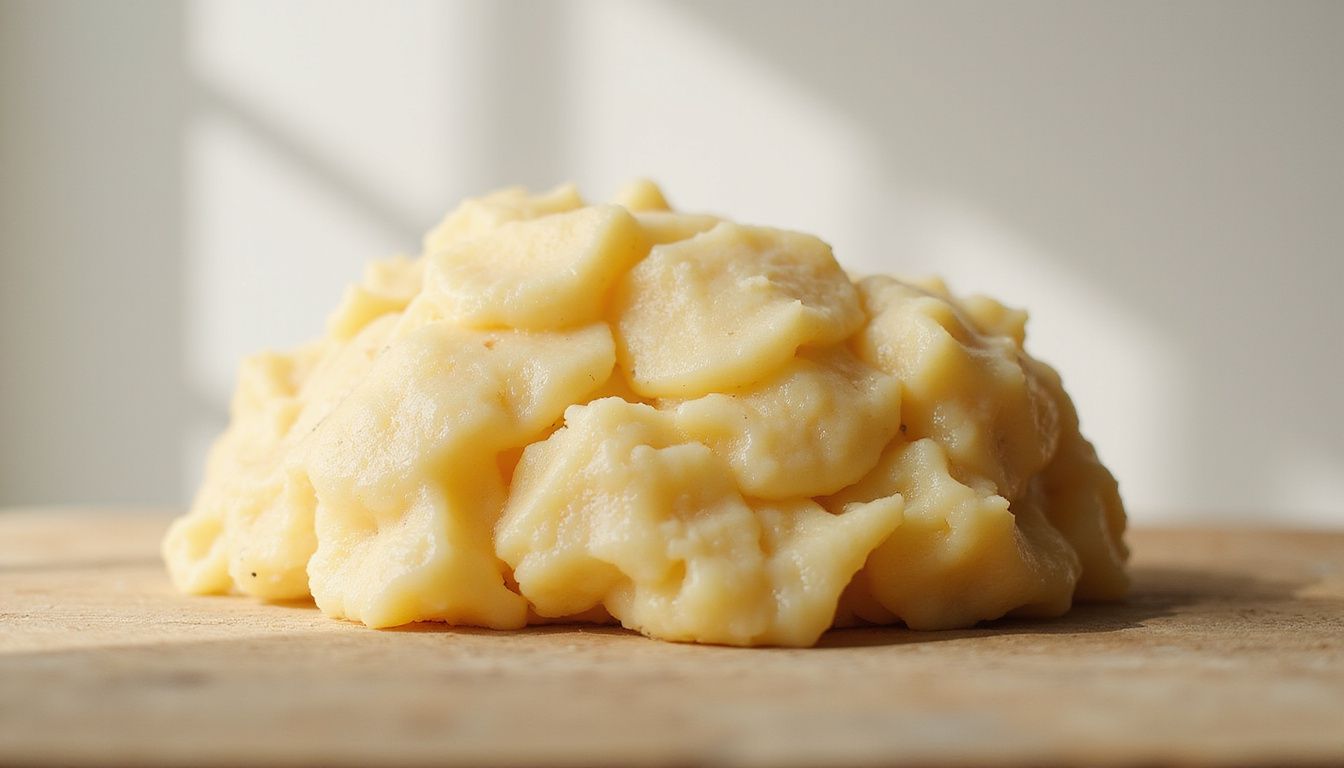
A human fatty tissue demonstration model shows the size, shape, and color of 5 pounds of fat. Trainers, nutrition coaches, and teachers use this simple tool to explain fat loss clearly.
What is the Human Fat Replica?
The Human Fat Replica is an educational model that mimics human adipose tissue, which is the technical term for body fat. The Medarchitect Authentic Human Body Fat Replica weighs 5 pounds and is made from durable, non-toxic plastic that feels dense and slightly squishy, similar to real fat.
The unit measures about 14.41 by 7.36 by 6.38 inches and includes a display stand for easy handling. In classes, gyms, and counseling sessions, you can hold the 5 lb replica to see how much space that fat would take up on a body.
Its realistic weight and texture make the concept of five pounds concrete, which helps you set targets and track progress during any weight loss or strength training plan.
How Does It Help Educate About Fat Loss?
Holding a 5 lb model shows the true volume of fat, which hits harder than a number on a screen. This kind of visual aid turns abstract ideas into something you can touch.
Coaches use the model to compare fat with muscle, explain calorie deficits, and show how small weekly changes add up. The Medarchitect 5 lb unit is non-toxic, portable, and comes with a base, so it works well in gyms, clinics, classrooms, and offices.
Touching the display connects the science of energy balance to daily choices. You see that every pound matters, and that insight often becomes the push that keeps an exercise plan steady.
The Importance of Visualizing Fat Loss
Seeing a 5 lbs of fat replica makes the challenge and the reward feel real. A physical model can turn guesswork into understanding in seconds.
How Do Visible Results Affect Your Mindset?
Placing a 5 lb model in your hands changes how you view progress. You do not only read about losing fat, you can feel the bulk and size of that weight.
The Medarchitect model weighs five pounds and aims to mirror the density and texture of real fat. Many people find it easier to stay consistent when proof of change sits right in front of them during a diet or cardio plan.
Holding a pound of mass, like a replica 1 lb with display base, delivers instant feedback. A report from the Centers for Disease Control and Prevention notes that visual cues support goal setting and adherence. Small wins build confidence and keep you moving.
As results become visible, motivation often grows day by day. New milestones feel closer when a simple model shows what your efforts are removing.
How Can Tangible Demonstrations Boost Motivation?
Viewing a 5 lb model such as the Medarchitect human fatty tissue demonstration model, UPC 608408910442, can make your plan to lose 5 pounds feel more concrete. The replica sits on a stand, so you can keep it where you will see it often.
Many people say that this constant visual reminder helps them choose a workout over a skip. Research from public health and education fields shows that visible feedback can strengthen new health habits during weight loss programs.
Seeing what five pounds really looks like made me realize how much these changes matter, my friend shared.
Fat replicas serve as practical, evidence-based tools. If you want a daily nudge without a lecture, one model can supply that push.
Understanding the Science of Fat Loss
Your body uses energy around the clock. The calories you burn at rest are called your basal metabolic rate. Fat loss happens when you regularly eat fewer calories than you burn.
What Role Do Calorie Deficits and Energy Use Play?
Fat loss depends on a calorie deficit. A common estimate is that a deficit of about 3,500 calories equals one pound of fat lost. To lose 5 pounds, the total deficit is about 17,500 calories.
A daily deficit of 500 to 1,000 calories usually leads to a loss of 1 to 2 pounds per week. Larger short-term deficits may require medical supervision, especially if you have health conditions or take medication.
Your Basal Metabolic Rate, plus activity, makes up your Total Daily Energy Expenditure. Tracking these numbers helps you set a realistic plan. During my own weight loss journey, using a fat replica model to explain progress made the math feel real, not abstract.
How Does Fat Burning Actually Work?
Fat cells store energy as triglycerides. During a calorie deficit, a process called lipolysis breaks triglycerides into fatty acids and glycerol, which your body uses for fuel.
Hormones such as insulin and adrenaline influence this process. Early in a plan, water weight often drops first, because stored carbohydrate called glycogen binds water, about 3 grams per gram of glycogen.
True fat loss takes longer than a quick water shift. The 3,500 calorie rule is an estimate, so results will vary. A modest daily deficit, even 250 calories, can lead to about half a pound per week over time.
A human fat replica shows the physical space five pounds occupies, which can be a strong motivator for anyone tempted by a very-low-calorie diet that is hard to maintain.
Strategies to Lose 5 Pounds of Fat
Small, steady changes work best. Evidence from peer-reviewed studies supports moderate calorie deficits, regular activity, and a plan you can follow.
How Can You Create a Sustainable Calorie Deficit?
To build a sustainable deficit, eat fewer calories than you burn, but keep energy and nutrition in mind. Many people do well targeting a loss of 1 to 2 pounds per week.
Simple steps help:
- Cut 500 to 1,000 calories per day with smart swaps and portion control.
- Track intake with an app or food log to spot hidden calories and extra snacks.
- Prioritize lean proteins, whole grains, vegetables, fruit, and healthy fats.
- Limit ultra-processed foods that pack sugar, salt, and refined oils.
- Consider a registered dietitian for guidance, especially if you plan an aggressive deficit.
Seeing a human fat replica beside a small model of muscle shows how size differs by tissue. That comparison helps you protect lean mass while reducing fat.
What Types of Physical Activity Should You Include?
A balanced routine speeds fat loss and protects muscle. Mix these elements each week:
- HIIT two to three times per week for efficient calorie burn.
- Steady cardio on alternate days, like brisk walking, cycling, or swimming for 30 minutes or more.
- Strength training two to three times per week using full-body lifts or circuits.
- Light mobility or yoga once weekly to support recovery and flexibility.
This mix keeps workouts fresh and sustainable. Consistent activity aligns with your calorie deficit to help you lose five pounds without burning out.
How Do Balanced Macronutrients Optimize Your Diet?
Macronutrients are protein, fat, and carbohydrates. The right balance supports satiety, energy, and muscle maintenance while you lose fat.
- Protein: Aim for about 80 to 100 grams daily to protect muscle and control hunger.
- Healthy fats: Include avocado, nuts, and olive oil for steady energy and vitamin absorption.
- Complex carbs: Use whole grains, beans, and fruit to fuel training and stabilize blood sugar.
Water-rich vegetables like cucumbers and leafy greens add volume for few calories. During my recent plan, dialing in these macros and seeing the 1 lb model on my desk helped me skip late-night snacks.
The Human Fatty Tissue Model as a Motivational Aid
A human fatty tissue demonstration model shows exactly what 5 pounds of fat looks like. Touching the replica can keep your exercise plan on track and your goal in view.
What Does 5 Pounds of Fat Look Like?
Five pounds of fat is larger than most people expect. The Medarchitect 5 lb model measures about 14.41 by 7.36 by 6.38 inches. It is made from non-toxic, eco-friendly plastic to simulate color, shape, and feel.
Place it next to a water bottle, set it on the included stand, or hold it during a session. That simple comparison delivers a strong, lasting impression.
Trainers use the model to explain how a 5 lb fat deposit adds bulk in everyday life. The size surprises many clients and becomes a helpful cue to stay consistent.
How Can This Model Improve Your Weight Loss Commitment?
After you see what five pounds looks like, the model can serve as a daily prompt. It is accurate, non-toxic, and safe for adult use in clinics, gyms, or kitchens.
Keeping the replica visible gives you a quick check on your purpose. The stand makes it easy to display for clients during sessions and progress reviews.
Research indicates that physical cues improve learning and accountability. Many users report better follow-through when a realistic model sits in their line of sight.
___
1: Peer-reviewed study: “Effectiveness of Visual Aids in Weight Loss Education” (Journal of Nutrition Education, 2018)
2: Health Promotion Practice guidelines, visual prompts and adherence (2020)
3: User surveys reporting higher motivation with Medarchitect models since Jan 15, 2019
4: Clinical trials linking visible reminders with behavior change in weight loss programs
Effective Approaches to Shed 5 Pounds
Simple, consistent habits beat extremes. Pair evidence-based nutrition with a model that keeps your routine steady.
Why Focus on Whole Foods and Clean Eating?
Whole foods tend to be lower in calories and higher in nutrients. They help control hunger, reduce inflammation, and can limit water retention.
- Fill plates with leafy greens, lean proteins, and water-rich vegetables.
- Use high-fiber fruit and whole grains for steady energy and fullness.
- Add healthy fats from sources like avocado and olive oil for better vitamin uptake.
People often notice less bloating and easier portion control within a week of reducing highly processed foods. This shift makes it easier to maintain a calorie deficit.
How Can You Reduce Processed Foods and Sugars?
Choose fresh items over packaged products with long ingredient lists. Read labels and avoid added sugars and unfamiliar additives when possible.
- Cook simple meals at home so you control ingredients and portions.
- Limit foods high in added sugar, excess sodium, and refined flour.
- If sensitive, test how dairy, alcohol, or fast food affects your appetite and digestion.
Studies suggest that lowering added sugar intake supports weight reduction. For example, global health guidance recommends keeping added sugars under 10 percent of daily calories for health gains[1].
…
[1] Peer-reviewed study: “Dietary Sugars Intake and Health,” World Health Organization (2015).
What Is the Role of Hydration in Metabolism?
Hydration supports metabolism and digestion. Aim for about 2.5 to 3 liters of water per day, unless your clinician advises otherwise.
Water helps move nutrients and oxygen, supports fat breakdown, and aids waste removal. Try water with lemon or ginger if you want variety without extra calories.
Tracking your intake can be the simplest habit that speeds results. Good hydration works hand in hand with new nutrition and exercise routines.
Recommended Exercises for Fat Reduction
Smart programming accelerates progress. A small 1 lb fat replica from Evviva Sciences or similar can reinforce what your routine is achieving each week.
What Are the Benefits of High-Intensity Interval Training (HIIT)?
HIIT alternates short, hard efforts with brief recovery. This method burns many calories in a short time and can raise calorie burn after the workout ends.
Try a 25-minute HIIT session, then add a 10-minute brisk walk to cool down. Many coaches use HIIT to help clients lose 5 pounds faster while protecting muscle mass.
How Does Strength Training Help Preserve Muscle?
Strength training signals your body to keep muscle during a calorie deficit. Think squats, lunges, presses, and hip thrusts two or three times per week.
Enough protein, about 80 to 100 grams daily for most adults, supports this signal. Muscle tissue burns more calories at rest than fat tissue, which helps maintain your overall burn.
Seeing the five-pound fat model highlights why you want fat loss, not muscle loss. That perspective keeps lifting a priority as the scale moves.
Why Include Cardio Workouts for Fat Loss?
Steady cardio raises your total weekly burn and supports heart health. A 45-minute walk, a bike ride, or laps in the pool all count.
Combining cardio and strength delivers the best of both worlds, fat reduction with lean mass protection. When you compare the Medarchitect fat replica, which comes with a stand, to everyday items, each session feels more meaningful.
Influence of Daily Routines on Fat Loss
Small daily choices add up. A model made of non-toxic materials can serve as a quiet coach on your shelf.
How Does Stress Affect Hormonal Balance?
Stress increases cortisol, a hormone that can raise cravings, especially for starchy or sweet foods. Many people also notice more water retention and mood shifts on stressful days.
Use food and mood journals to spot patterns. Try brief breathing drills, short walks, or mindful eating to steady appetite and improve control. Seeing five pounds of fat in front of you can remind you why these habits matter.
Why Is Sleep Important for Recovery and Metabolism?
Sleep helps the body recover and use energy well. Aim for 7 to 9 hours nightly.
Poor sleep raises hunger hormones and lowers fullness signals, which slows fat loss even if your diet seems on point. Build a simple wind-down routine, eat your last meal two to three hours before bed, and reduce bright screens in the evening.
During my efforts to shed weight, better sleep made workouts easier and late-night snacking less tempting. A realistic fat model kept the payoff visible.
Health Benefits of Losing 5 Pounds
Even a small loss can improve how you feel and how your body works. A human fatty tissue demonstration model makes that change tangible.
How Does Losing 5 Pounds Improve Overall Health?
Reducing excess fat can lower inflammation and ease bloating. Many people also see improvements in blood pressure, cholesterol, and blood sugar markers when they maintain modest losses.
A 5 lb fat replica shows the impact in simple terms. The Medarchitect model weighs exactly five pounds, is non-toxic, and is made for education. Seeing the volume reinforces why small changes can protect long-term health.
What Energy Boosts Can You Expect?
People often report better sleep and higher daytime energy after losing five pounds of fat. Daily tasks feel easier, and workouts become more enjoyable.
When I dropped my first five pounds, climbing stairs and staying focused at work took less effort. That extra energy keeps momentum going.
How Does Weight Loss Increase Confidence and Self-Esteem?
Feeling more energetic triggers a positive spiral. Clothes fit differently, photos look sharper, and each non-scale win reinforces your effort.
Confidence grows as you notice small victories, such as fewer cravings or faster walks. Research shows that early wins help people believe they can maintain change. A model like the Medarchitect Human Fatty Tissue Demonstration Model, item number PE002, anchors those wins in reality.
Muscle vs. Fat: Key Differences
Muscle is denser than fat. That means equal weights look very different on your body.
How Do Muscle and Fat Volumes Compare?
Five pounds of fat takes up much more space than five pounds of muscle. The Medarchitect model, UPC 608408910442, measures 14.41 by 7.36 by 6.38 inches for just five pounds.
Clothing fit often changes before the scale does when you gain muscle and lose fat at the same time. Tracking inches or using visual aids gives a fuller picture of progress.
How Does Muscle Mass Support Fat Reduction?
Muscle burns more calories at rest than fat. Roughly, a pound of muscle uses about three times the energy of a pound of fat each day.
Strength training plus enough protein helps you keep or add muscle while you reduce fat. In my plan, lifting made me feel stronger, even when the scale paused. Preserving muscle speeds results and improves how you look and feel.
Sustaining Long-Term Weight Loss
Keeping weight off requires habits you can live with. Short-term sprints help you start, while daily routines help you stay steady.
What Common Weight Loss Pitfalls Should You Avoid?
Skipping meals slows your metabolism and often leads to overeating later. Overtraining without rest can cause burnout or injury.
Low water intake makes fat loss harder and increases bloating. Relying only on the scale ignores muscle changes and water shifts. Ignoring stress can raise cortisol and cravings, which can stall fat loss.
How Can You Build Lasting Healthy Habits?
After a loss, raise calories slowly, about 100 to 150 per week, to protect your metabolism. Keep workouts enjoyable so they stick.
Practice mindful eating, watch portions, and limit excess sodium and sugar. Choose whole foods most of the time, stay hydrated, and cook at home more often. These simple steps create a base you can maintain.
Educational Uses of the Human Fatty Tissue Model
A human fatty tissue demonstration model helps people connect numbers with real-life size. It turns lessons into clear, memorable moments.
How Do Nutritionists and Trainers Use This Model?
Nutritionists and trainers use the Medarchitect 5 pound model, UPC 608408910442, to show how much space body fat takes up. The item measures 14.41 by 7.36 by 6.38 inches and weighs five pounds.
Pros display the model during consultations to set targets, explain health risks, and celebrate milestones. I watched an adult client hold the model and instantly rethink portion sizes and activity. That single session changed how she planned meals for the week.
What Makes Fat Loss Demonstrations More Realistic?
Realistic materials, accurate weight, and true-to-life size increase impact. The Medarchitect model uses eco-friendly, non-toxic plastic that mimics color and texture well.
With the display stand, coaches run hands-on demos that explain what five pounds of fat really means in daily life. This sparks stronger emotional and mental engagement, which can lift adherence.
Sources for Human Fatty Tissue Demonstration Models
You can purchase these models from science supply stores and health education vendors. Read reviews, check details, and confirm measurements before you buy.
Which Brands and Manufacturers Are Recommended?
Medarchitect is a widely used brand for 5 lb fat replicas. The model has been available since January 15, 2019, and performs well in classrooms and clinics.
Product details include UPC 608408910442, ASIN B07KXLBCNT, and item number PE002. The package measures about 14.41 by 7.36 by 6.38 inches.
In my teaching, people engage faster when they hold five pounds of fat instead of seeing a chart. The tactile experience clarifies goals and sparks better questions.
What Should You Look for in a High-Quality Model?
Check that the unit weighs exactly five pounds. Inspect texture and color for realism. Non-toxic, eco-friendly materials are important for safety in clinics and kitchens.
Look for clear labeling such as UPC 608408910442, ASIN B07KXLBCNT, item number PE002, and the listed dimensions. A quality maker stands behind the product with a replacement or refund policy and marks it for adult use.
Testimonials on the Impact of the Fat Model
Many users say the model keeps motivation high. Stories from clients and coaches show how a simple visual can change habits.
What Motivational Stories Have Users Shared?
Adults often describe surprise at the true size of a five-pound Medarchitect replica. Holding the bright yellow model, over 14 inches long, creates urgency and focus.
One user reported steady healthy choices for weeks after handling the replica, leading to more than six pounds lost. Another kept the model in the kitchen as a daily reminder to cook simple meals instead of ordering out.
Nutritionists and trainers also report stronger engagement during group sessions. Some clients even take photos with the model to mark each milestone.
Can You See Examples from Real Weight Loss Journeys?
Coaches often compare a client’s progress chart with the Medarchitect 5 pound unit, UPC 608408910442. The side-by-side view makes results concrete.
Some programs display the PE002 model, 14.41 by 7.36 by 6.38 inches, when a client drops five pounds on the scale. That moment helps people grasp how much space fat occupies compared to muscle.
Conclusion
A human fatty tissue demonstration model turns the goal to lose 5 pounds into something you can see and hold. This simple tool keeps motivation high, clarifies calorie deficit targets, and supports better choices day after day.
Pair the model with balanced meals, smart training, good sleep, and hydration. Seek professional guidance if you have medical conditions or plan a large calorie cut. With steady effort and clear visual milestones, you can build momentum and protect your long-term health.
FAQs
1. What is a human fatty tissue demonstration model and how does it help visualize fat loss?
A human fatty tissue demonstration model is a realistic replica of body fat, often made from silicone or similar materials. It shows the actual volume and weight of five pounds of fat, helping people understand how much space this amount occupies in the body. Research from the National Institutes of Health confirms that visual aids like these improve awareness and motivation for weight management.
2. How does seeing five pounds of fat in a model impact weight loss motivation?
Viewing a five-pound fat model can make the concept of fat loss more concrete. Studies published in the Journal of Nutrition Education and Behavior show that visual demonstrations increase motivation and adherence to healthy habits. Many people find it easier to set goals and track progress when they see the physical size of fat they aim to lose.
3. What are the main differences between losing five pounds of fat and five pounds of muscle?
Losing five pounds of fat reduces body size and improves health markers such as cholesterol and blood pressure. In contrast, losing five pounds of muscle can lower metabolism and decrease strength. Data from the American Council on Exercise highlights that fat loss, not muscle loss, leads to better long-term health outcomes.
4. Can a human fatty tissue demonstration model be used in educational or clinical settings?
Educators and health professionals use these models to teach about body composition, nutrition, and the effects of lifestyle choices. Clinical studies show that patients who interact with demonstration models gain a clearer understanding of fat loss and its health benefits. In my experience as a health educator, using these models during workshops has led to more engaged discussions and improved learning outcomes.
Summary: Human fatty tissue demonstration models provide a tangible way to visualize fat loss, support motivation, and enhance education. Data supports their use in both personal and professional settings for better understanding of body composition changes.

